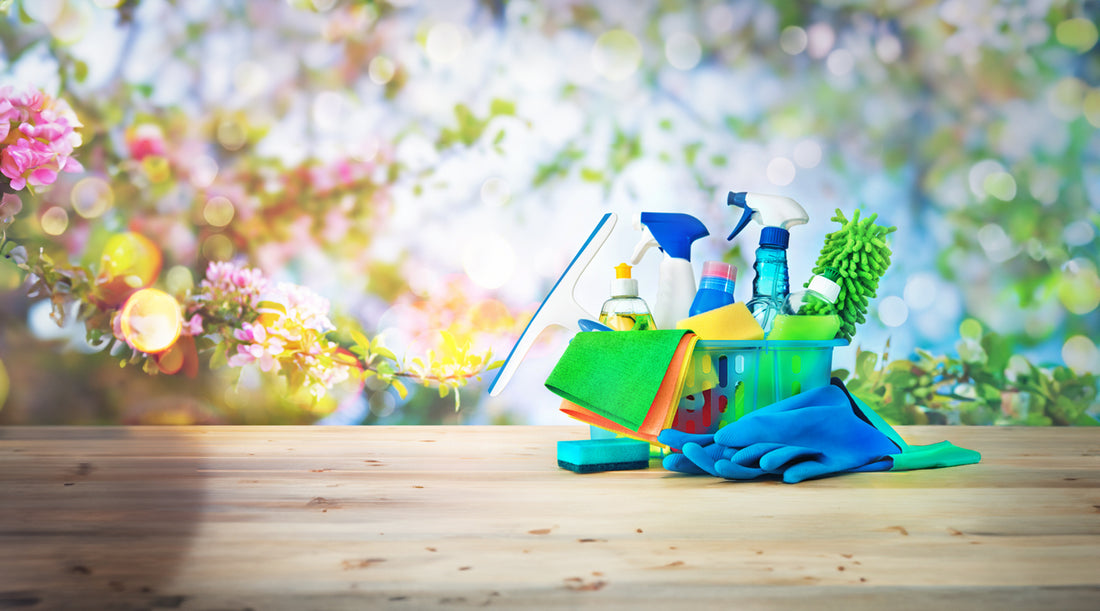Spring is prime time to throw the windows open wide, declutter, and clean up our living space. For preppers, spring cleaning is about more than just cobweb hunting and clearing – it’s also the perfect time of year to dust off your bug out bag, prepping supplies, and survival skills.
Here are 7 spring cleaning steps for preppers to help ensure your emergency preparedness plan is spick and span.
1. Update Your Bug Out Bag & Car Kit
Out with the old, in with the new. Your bug out bag and car kit are your first line of defense in many emergency scenarios, so it's essential they stay up to date. Maybe you ate the granola bars you had packed in your BOB as a snack one day or one of your water pouches leaked in your trunk. Start with a full inventory and check for expired, damaged, or used items. Replace or replenish supplies and consider whether your bag/kit still meets your needs. For example, you'll probably want to switch out that wool winter beanie you tucked in your go bag for a baseball cap or another hat style that offers a little sun protection. Needs change season to season, so we actually recommend a quarterly review to ensure you have what you need on hand when it counts.
2. Review and Restock Your First Aid Kit
A well-stocked first aid kit is critical to survival and should never be neglected. Just as with your bug out bag, check your supplies for expiration dates and overall condition – ancient bandages can lose their adhesive properties, medications can degrade, and items can get used up or lost. Restock any items that are running low or depleted. This spring, consider adding some allergy medication and insect repellent to protect yourself against seasonal threats. Take a moment to review your skills as well (more on this below) since knowing how to administer first aid is as important as having the right supplies within reach.
3. Take Inventory and Rotate Your Survival Food Stores
Your food and water stores are the backbone of your emergency preparedness. Take inventory of what you have and note expiration dates. Use a first-in, first-out system and rotate your supplies so that nothing goes to waste. Spring can bring severe weather, and having a well-stocked pantry of non-perishables and water is essential. Don't forget to include foods you enjoy – in a stressful situation, a familiar, favorite meal can work wonders for morale.
While you're at it, spring clean your emergency pantry. Look for ways to improve the organization and accessibility of your supplies. Consider new shelving, bins, or labels to make finding items easier.
4. Charge and Test Gear and Electronics
During an emergency is not the time you want to find out that the solar charger is out of juice, or your flashlight has dead batteries. Even the fanciest Maglite with the best technical specs won't serve you if it has dead AA's! Take the time to charge all of your electronic gear and test it to make sure it's in good working order. This includes items like radios, flashlights, portable chargers, even camp stoves – make sure everything is charged, fueled, and operational. Consistently maintaining your equipment will prevent any unexpected hiccups.
5. Review Your Emergency Plan
Emergencies can happen anytime, anywhere. Make sure you and your family are on the same page with a thorough review of your emergency plan. For instance, imagine there's a wildfire in the neighboring county – who's picking the kids up from school? Who's getting your mother-in-law who can no longer drive? Is your cousin Kathy's house still the best place to go now that she and her husband downsized to a smaller home?
Consider any changes that have occurred in your family's living situation, or any lessons learned since you last updated your plan. Make adjustments based on changing threats or new developments. A clear, updated plan gives your family a roadmap to follow when a disaster strikes.
It's also a good idea to practice different scenarios, so everyone is familiar with their roles and responsibilities. This will increase your chances of successfully executing your plan in a high-stress situation.
6. Brush Up on Your Survival Skills
Just like a knife blade will get dull if you don’t sharpen it, skills will get rusty without practice, and spring is the perfect time to do a refresher course. Whether it’s fire-building, navigating without GPS, or cooking without electricity, practice each skill until you're comfortable with it. Maybe introduce a new skill you've been meaning to learn – finally take that CPR course or join that foraging club. Use the warmer weather as an excuse to get outside and hone your abilities. You'll be glad you did in case of an actual emergency.
7. Take Stock of and Tune Up Your Home's Safety Features
A thorough spring cleaning should also include a review of your home's safety features. Check and replace any smoke or carbon monoxide detector batteries as needed. Make sure fire extinguishers are up to date and in working order. Change your HVAC filters. Trim branches back away from your home. Consider installing or updating security systems and take steps to secure any potential entry points against intruders.
Refresh, Reorganize, and Ready Your Prepping Supplies and Skills This Spring
Spring cleaning for preppers is a comprehensive process that makes sure everything you've set aside for a rainy day is just as ready as you are. So, check these 7 simple spring cleaning steps off your list and use this season of renewal to get your survival game in shipshape. Remember, the best time to prepare was yesterday, but the next best time is now!

